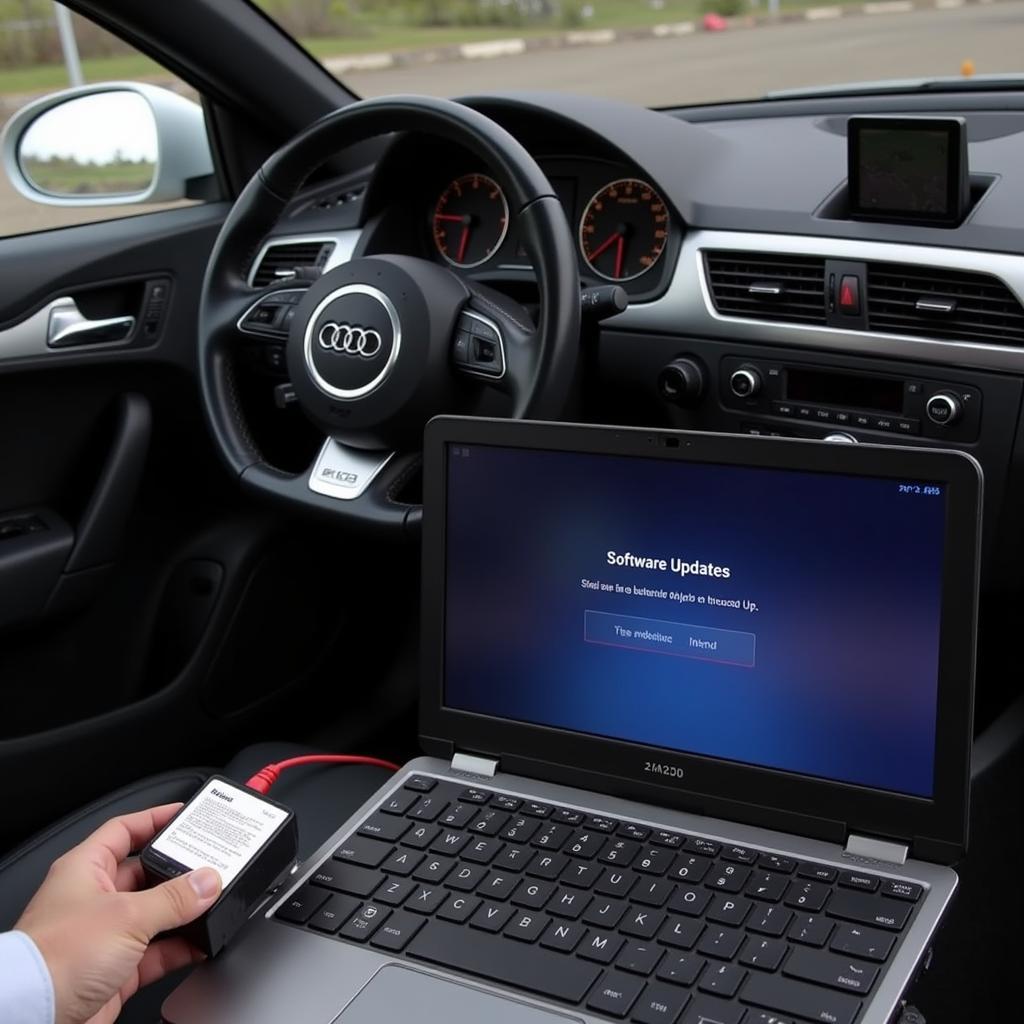Your 2016 Subaru is a marvel of engineering, but like any machine, it relies on a complex system of sensors and warning lights to communicate its health. One of the most crucial warning systems is related to your brakes. When a brake light illuminates on your dashboard, it’s your car’s way of saying, “Hey, pay attention to me!” This guide will demystify the meaning behind those 2016 Subaru brake light warning lights, empowering you to address any potential issues promptly.
Understanding Your Subaru’s Brake Warning System
Your 2016 Subaru utilizes a combination of sensors and lights to alert you of potential brake system issues. Ignoring these warnings can compromise your safety and lead to costly repairs.
Common Brake Warning Lights and Their Meanings
Several warning lights relate to your Subaru’s brake system. Here’s a breakdown:
-
Red Brake Warning Light: This is the most critical brake warning light. When illuminated, it typically indicates one of two things:
- Low Brake Fluid: Your brake fluid level is dangerously low, potentially compromising your ability to stop safely.
- Brake System Malfunction: There might be a problem within the brake system itself, requiring immediate attention.
-
Amber ABS Warning Light: This light signifies an issue with your Anti-lock Braking System (ABS). While your regular brakes may still function, the ABS, crucial for preventing wheel lockup during hard braking, is deactivated.
-
Electronic Parking Brake (EPB) Light: If this light flashes or stays illuminated, it suggests a problem with your electronic parking brake system. This could range from a faulty switch to a more serious electronic malfunction.
What to Do When a Brake Warning Light Turns On
1. Assess the Situation: If a brake warning light illuminates, don’t panic. Pull over to a safe location as soon as possible.
2. Check Your Owner’s Manual: Your Subaru owner’s manual is your best resource for understanding the specific warning lights on your dashboard.
3. Check Your Brake Fluid: If you suspect low brake fluid, carefully open the reservoir (refer to your owner’s manual for location) and check the level. If it’s low, adding brake fluid might temporarily solve the problem, but it’s crucial to have the system inspected for leaks.
4. Seek Professional Help: For any brake warning light, particularly the red brake warning light, it’s best to have your vehicle towed to a qualified mechanic or Subaru dealership. Attempting to diagnose or repair brake issues yourself can be dangerous.
Remote Diagnostics and Software Solutions for Your 2016 Subaru
In the age of connected cars, remote diagnostics and software solutions have become increasingly common. Some 2016 Subaru models might offer remote diagnostic services that can provide preliminary insights into the cause of the brake warning light.
“Remote diagnostics can be incredibly valuable in these situations,” says Sarah Jenkins, a senior automotive technician at a Subaru dealership. “It allows us to get a head start on understanding the problem, potentially saving the customer time and money in the long run.”
However, it’s essential to remember that remote diagnostics might not always provide a definitive diagnosis. A hands-on inspection by a qualified technician is often necessary to determine the root cause of the issue.
Preventing Brake Warning Lights in the Future
Preventing brake issues is always preferable to dealing with them after they arise. Here are some proactive steps to keep your Subaru’s braking system in top shape:
- Regular Brake Inspections: Adhere to your Subaru’s recommended maintenance schedule for brake inspections. This usually involves checking brake pad thickness, rotor condition, and brake fluid level.
- Quality Brake Pads: Invest in high-quality brake pads that match your driving style and conditions.
- Brake Fluid Flush: Over time, brake fluid can absorb moisture, reducing its effectiveness. Follow your Subaru’s recommended intervals for brake fluid flushes.
Conclusion
Understanding the meaning of your 2016 Subaru’s brake warning lights is paramount for safe driving. By heeding these warnings, addressing issues promptly, and practicing preventative maintenance, you can ensure your Subaru’s braking system remains reliable for years to come.

